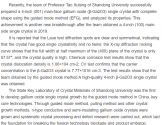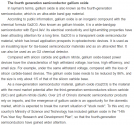Bro sameJust wean off all Western and Jap technology already.
You are using an out of date browser. It may not display this or other websites correctly.
You should upgrade or use an alternative browser.
You should upgrade or use an alternative browser.
Chinese semiconductor industry
- Thread starter Hendrik_2000
- Start date
- Status
- Not open for further replies.
These are very important precursors but luckily theres many companies in China that produce TEOS and TDMAT. What is equally important is the delivery system.Nanda Optoelectronics: 7 precursor products are currently being supplied in large quantities to major customers including SMIC, YMTC, etc.
Recently, NTU Optoelectronics said in an institutional survey that the precursor business currently supplies 7 products such as TEOS (for silicon plasma ALD) and TDMAT (for titanium plasma ALD) in large quantities. The customers are mainly chip manufacturers, such as SMIC and YMTC.
With the dual support of its own R&D technology accumulation and outsourced patents, NTU’s R&D and industrialization layout in the field of advanced precursor materials has been well established. %. With the further advancement of industrialization and the continuous expansion of the market, the precursor business is expected to become the company's new business growth point.
Regarding the possibility of failure of the silicon precursor patent purchased by the company from DuPont in the United States under the situation of Sino-US trade tension, NTU said that when the company purchased the silicon precursor patent, the corresponding products were only available in the laboratory stage. The output is not sold on the market and is not included in the relevant restricted list.
The company purchased the ownership of the relevant patents, and the registration and filing procedures for changing the patentee have been completed. Therefore, the company has full autonomy over these silicon precursor patents.
The main energy of Ningbo Nanda Optoelectronics Co., Ltd., the main body of its photoresist project, is to focus on the customer certification of ArF photoresist, and strive to achieve large-scale sales and industrialization as soon as possible.
It said that the technology of ArF photoresist can be extended to the direction of KrF photoresist, and the follow-up company will determine whether to carry out the research and development and industrialization of KrF photoresist according to the progress of the project and the market situation. The supporting materials required for the production of ArF photoresist, such as important monomers, developing solutions, etc., are independently developed and produced by the company. For materials with domestic production capacity, the company adopts domestic procurement. The company has always insisted on fundamentally solving the "stuck neck" problem of ArF photoresist, and building a complete industrial chain from supporting materials to advanced photoresist products.
View attachment 98403View attachment 98404
Without revealing proprietary information, in general these highly air sensitive ALD precursors are delivered to customers in metal gasket sealed cases using CF flange lid and VCR fittings. Note, they are usually not O-ring sealed, as even the tiny amounts of water permeation through a Viton or even perfluoroelastomer O-ring may cause oxidation of the precursors which leads to a particle generating impurity. For instance, HfCl4 ALD precursor for high-k dielectric experiencing even a trace oxidation event (even high ppb/low ppm level), if not caught by QC, results in scrapping wafers because line nucleated HfO2 particles get distributed.
Delivery systems look something like this and
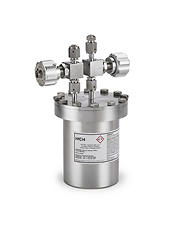
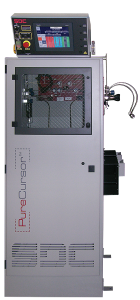
Solid one looks like a simple canister but if you see the inside (which is proprietary) every moving part such as the valves are selected for lowest atmospheric permeability, particle resistance and is designed to be uniformly heated. There's actually internal heat transfer fins holding the precursor with complicated shapes to maintain laminar flow of hot carrier gas and transfer heat from the walls. A liquid system is also complicated, this time involving active components such as valves, MFCs etc. It involves a bunch of unit operations such as gas bubbling (to remove particulate and acid/base impurities), liquid drying, bubbling through a specially formulated precursor solvent, hermetically sealed lines, etc. Luckily China has companies making this sort of equipment.
TSMC is in an oligopsony situation.. SmhA sign of things to come, Apple refuse to accept TSMC price hike. TSMC bargaining power is slowing ebbing, can't ask customer to pay extra premium especially IF its your only sole client for the 3nm technology, They are now regretting ditching Huawei....lol
The Mainland Chinese tech company had been reading this, the reason why they won't invest a battery factory in the US to service Apple, exclusivity is a double edge sword, your company may grow exponentially BUT you are at their mercy and whims.
And I'm thinking the much hype Apple Car is vaporware, expected to be release in 2025, by that time its Chinese Rivals had taken over the market. Hoping to seizes the premium segment with the downturn and incoming depression, good luck with that and lets see IF it hit the ground running.
With demand cascading and massive increase in FAB capacity, who among the major FABS will thrive?
Apple Reportedly Refuses to Accept TSMC Chip Price Hike
Wednesday September 28, 2022 6:29 am PDT by
Apple has reportedly refused to accept a price increase from its sole chip supplier, TSMC, according to .
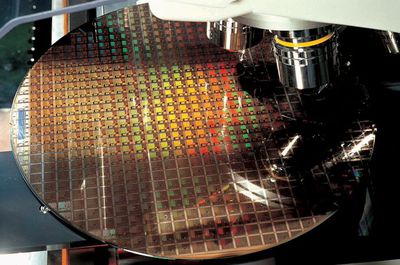
The report claims that Apple, the largest customer of TSMC, has rejected the supplier's plans to increase chip prices next year. TSMC has been planning to increase its prices by six to nine percent, depending on the fabrication process.
TSMC's chips were already around 20 percent more expensive compared to those from its direct rivals, but smaller foundries have ramped up their own prices in recent years due to higher material and logistics costs, and TSMC has committed to $100 billion in new investment over the next three years, motivating the company to increase its prices to maintain its premium and pass added costs on to clients.
TSMC was also reportedly keen to stop its clients from and ordering more chips than needed in the hope of securing production line space and additional support from contract chipmakers, which has made it difficult for the company to understand real demand.
Following negotiations, Apple has apparently refused to accept further price increases. TSMC makes all of Apple's custom silicon chips, but Apple is estimated to make up more than one quarter of TSMC's entire revenue, meaning that the companies are fairly reliant upon each other. An improvement in the semiconductor industry's supply outlook despite inflation is believed to have hardened Apple's refusal to acquiesce to price hikes.
Like many of Apple's suppliers, TSMC has been wrestling with supply chain issues since 2020. Last year, it was speculated that Apple to account for substantial chip price rises.
@ansy1968, are you suggesting all fabs you listed will reach capacity and fully operational by 2024? Any idea how many total scanner systems this will require? How many total scanners do you foresee SMEE capable of delivery by 2024?Topline ASML are used in SN1 and SN2 FAB (100,000 wpm scalable to 150,000), expansion FAB in Beijing, Tianjin, Shenzhen, Shanghai Lingang and Chongqing will be using mix with majority domestic DUVL with IOC next year with full operation in 2024. Can SMEE deliver? with 4 months before 2023, yes it can!
The math doesn't seem to add up.
Makes me wonder how far along is Intels new high end fab?View attachment 98399
So in the middle of a global downturn TSMC wants APPLE to pay for those expensive EUV machines that they recently bougth...........Nice.
Is there a change it will come online in next few years?
inbe4 TSMC goes into money problems so Intel with government money can buy those EUV machines for pennies on the dollars.
RelatedShandong University team successfully developed 4-inch gallium oxide
View attachment 98412View attachment 98413
If they can get SN1/SN2 up to 70k wpm by 2024, I think most people here should be happy. Heard earlier that getting equipment for advanced nodes is hard. Maybe that will be easier now that domestic suppliers are further along. I don't know how much more they can expand SMSC location. Maybe Lingang will also do advanced node.@ansy1968, are you suggesting all fabs you listed will reach capacity and fully operational by 2024? Any idea how many total scanner systems this will require? How many total scanners do you foresee SMEE capable of delivery by 2024?
The math doesn't seem to add up.
As for other stuff, my understanding is the Shenzhen fab is coming online this year. The Beijing one might start production next year but probably won't hit close to 100k until 2025. And then there is a second phase of 100k wpm. Lingang started construction in January, so probably a year behind Beijing and start production in 2024. Tianjin just started construction this week, so probably another 2024 production start. All of this will take a while. They will need to continue to buy Western equipments, especially ASML machines. It's important to not underestimate the difficulties of scaling up production of domestic equipment.
Interesting, looks like they are few companies making this kind of equipment,yet to see how advance they are or how independent they are to geopolitical trouble. Looks like is an area that still need some work to do.These are very important precursors but luckily theres many companies in China that produce TEOS and TDMAT. What is equally important is the delivery system.
Without revealing proprietary information, in general these highly air sensitive ALD precursors are delivered to customers in metal gasket sealed cases using CF flange lid and VCR fittings. Note, they are usually not O-ring sealed, as even the tiny amounts of water permeation through a Viton or even perfluoroelastomer O-ring may cause oxidation of the precursors which leads to a particle generating impurity. For instance, HfCl4 ALD precursor for high-k dielectric experiencing even a trace oxidation event (even high ppb/low ppm level), if not caught by QC, results in scrapping wafers because line nucleated HfO2 particles get distributed.
Delivery systems look something like this and


Solid one looks like a simple canister but if you see the inside (which is proprietary) every moving part such as the valves are selected for lowest atmospheric permeability, particle resistance and is designed to be uniformly heated. There's actually internal heat transfer fins holding the precursor with complicated shapes to maintain laminar flow of hot carrier gas and transfer heat from the walls. A liquid system is also complicated, this time involving active components such as valves, MFCs etc. It involves a bunch of unit operations such as gas bubbling (to remove particulate and acid/base impurities), liquid drying, bubbling through a specially formulated precursor solvent, hermetically sealed lines, etc. Luckily China has companies making this sort of equipment.
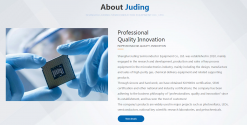
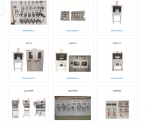
New Zhaoxin CPU and APUs are about to launch
What is more worth mentioning is that Zhaoxin is about to release Kaisheng KH-40000 series server processors and Kaixian KX-6000G series high-performance PC/embedded processors based on a new generation of self-developed micro-architecture. Among them, Kaisheng KH-40000 series server processors can provide stronger computing performance, higher integration, more efficient expansion interconnection, and rich IO interfaces, which can further meet the requirements of server products for multi-core, multi-memory, multi- Mainstream application requirements such as PCIe expansion interface. Kaixian KX-6000G series processors can bring users a more superior product experience with more outstanding graphics performance and energy efficiency ratio.
更值得一提的是,兆芯即将发布基于新一代自研微架构的开胜KH-40000系列服务器处理器和开先KX-6000G系列高效能PC/嵌入式处理器。其中开胜KH-40000系列服务器处理器能够提供更强的计算性能、更高的集成度、更高效的扩展互连,以及丰富的IO接口,能够进一步满足服务器产品对多核心、多内存、多PCIe扩展接口等主流应用需求。开先KX-6000G系列处理器则能够凭借更加杰出的图形性能和能效比,为用户带来更加优越的产品使用体验。
- Status
- Not open for further replies.

